Don’t use a full Moon pass to skip this year’s Perseid meteor shower. Right here, right now, we’re going to help you make the most of it.
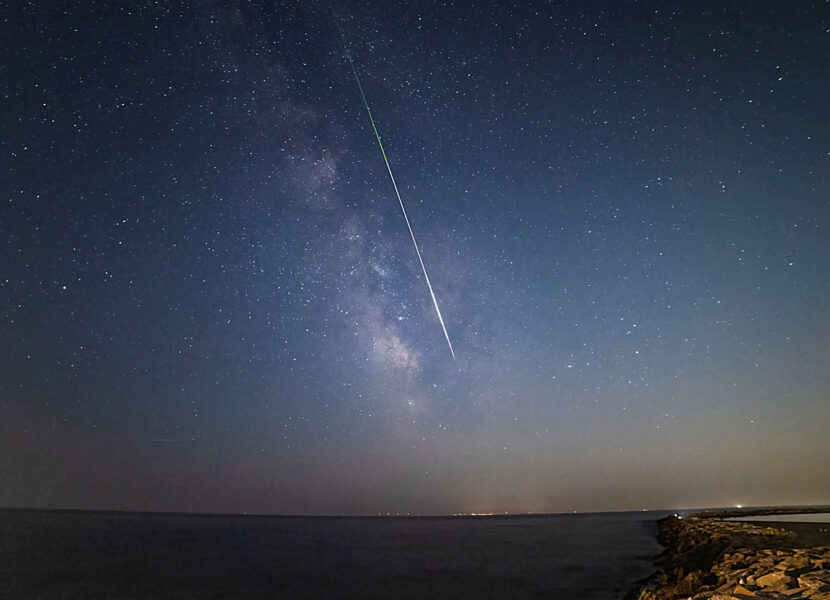
Peter Ryan
Skywatchers are fond of alignments but not those where a bright Moon coincides with the peak of a major meteor shower. In this year's roll of the dice the annual Perseid maximum falls just a day after the full Sturgeon Moon.
Despite the light bath, there's still hope for a good show for a couple of reasons. First, the shower is prolific — Perseids flash by at the rate of more than one a minute. Even if you reduce that by more than half due to moonlight, that's still around 25 per hour. Second, this famous annual shower is the undisputed king of fireballs, according to Bill Cooke at NASA's Meteoroid Environment Office. The American Meteor Society (AMS) defines a fireball as a meteor "generally brighter than magnitude -4" or the equal of Venus or brighter.
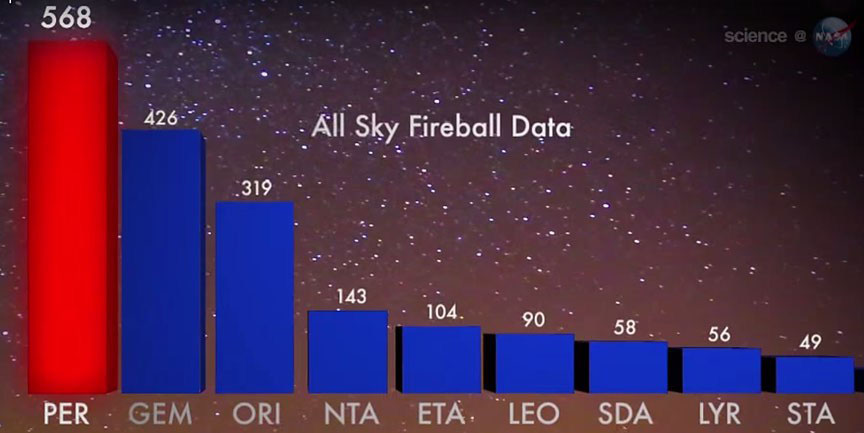
NASA
Great balls of fire
Cooke and team monitored the shower between 2008 and 2013 and recorded 568 fireballs compared to the second-place Geminids with 426. The greater percentage may have to do with the considerable size of the Perseids' parent body, Comet 109P/Swift-Tuttle, which has a diameter of around 26 kilometers. Bigger comets like 109P release more material when baked by the Sun, resulting in a greater number of larger pieces. And larger meteoroids typically produce brighter flashes when they enter the atmosphere.
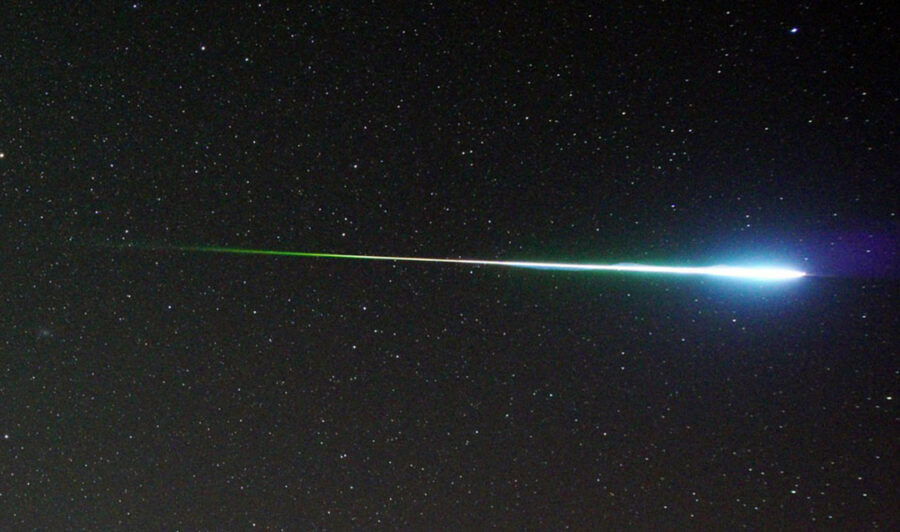
Siaraduz / CC BY-SA 4.0
"The average peak magnitude for a Perseid observed by our cameras is –2.7; for the Geminids, it is –2,"explains Bill Cooke. "So on average, Geminid fireballs are about a magnitude fainter than those in the Perseids." Most Perseids are the size of sand grains with a few "chocolate chips" thrown in for good measure. In a 2004 paper that appeared in the Monthly Notices of the Royal Astronomical Society, a team of Canadian astronomers estimated that it only takes a comet shard about 30 mm (1.2 inches) across to create a –6 magnitude fireball.
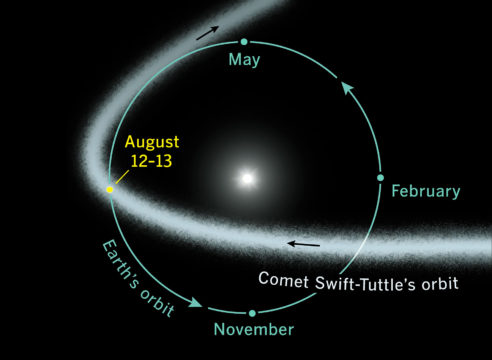
Sky & Telescope
Comet 109P/Swift-Tuttle makes a pass through the Sun's hot kitchen every 133 years. Each time, it loses a fraction of its mass as dust and rocks that fans out into a broad stream of debris. Earth makes contact with the stream's fringes in mid-July and doesn't exit until the end of August. In fact, during the recent Southern Delta Aquariid shower, which peaked on July 30th, I counted more Perseids (five) than Delta Aquariids (three) in an hour, proving that Earth was already knee-deep in the flow nearly two weeks before maximum.
Viewing opportunities
The real action happens when we speed through the stream's core which occurs on August 13th around 1:00 UT (August 12th, 9 p.m. EDT). For North American observers that puts the peak of the shower on Friday night August 12–13. If the weather forecast looks grim, the previous evening (August 11–12) should be nearly as good. Alternatively, you can avoid moonlight altogether for one precious hour on Wednesday morning August 10th beginning around moonset at 3:30 a.m. local time until the first blush of dawn.
That brief window of darkness will also be an ideal time for meteor photography. I like shooting 30-second exposures wide open at f/2.8 with a wide-angle lens (16- to 20-mm) at ISO 1600 or 2500. With the full Moon out, photos are still possible, but you'll need to reduce exposure time and lower your ISO, necessarily capturing fewer "shooting stars."
Perseid streaming service
It's tempting to visualize the comet's debris trail as a Saharan sand storm. But the 2004 paper cites an earlier study that determined that there are just 90 ± 16 meteoroids per 1 billion cubic kilometers of space capable of producing meteors brighter than magnitude 6.5. For reference it takes our planet about 15 minutes to sweep across a volume of that size.
The combined motion of the Perseid stream and Earth's orbital hurry keep the meager supply of visible meteoroids coming and help us to form a mental image of the space we must cover to see even a single Perseid, let alone 20 or 30. Play with the interactive visualization of the shower (above, by Peter Jenniskens and Ian Webster) to get a real, 3D-feel for the event we're about to witness.
The emissaries of Swift-Tuttle may only be as big as sand grains or at best one of those shredded wheat pillows, but they're traveling at more than 200,000 kilometers per hour when they encounter Earth's atmosphere.
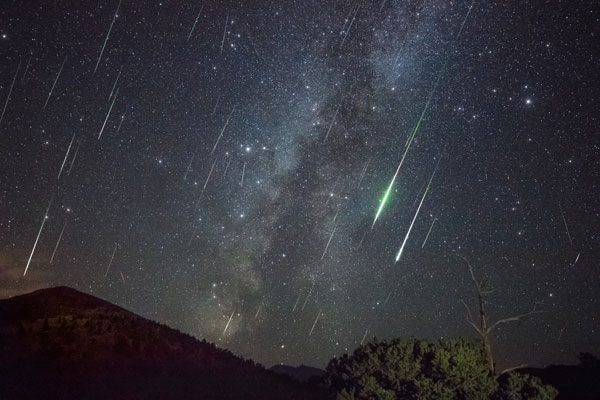
Jeremy Perez
Ramming home the point
Ram pressure — the rapid compression of air in front of the speeding particle —quickly heats it to more than 1650°C (3000° F), much like the heat shield of a spacecraft reentering the atmosphere. That's hot enough to ablate the incoming meteoroid, ionizing its atoms as well as the air molecules along its path. This creates a dense, glowing channel of plasma many times the size of the original particle. In a word — a meteor. I find it nothing short of astonishing to witness the transformation of an insignificant crumb into a blaze of light that makes you want to raise a fist and shout "YES!"
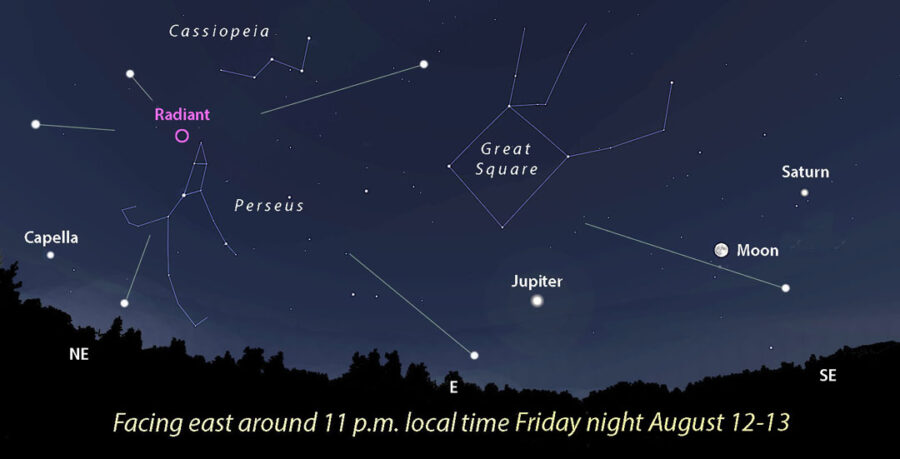
Stellarium with additions by Bob King
You can begin watching for Perseids as early as 9:30–10 p.m. local time, when the radiant has barely risen in the northeastern sky. That's the ideal time to spot meteors arriving nearly tangent to the upper atmosphere called earthgrazers. Skittering through the thin air like stones skipping on water, they travel long distances across the sky and sometimes glow for many seconds. The radiant itself is just an optical illusion, a vanishing point like parallel railroad tracks or crepuscular rays that appear to converge in the distance. Like those tracks and rays, Perseids enter on separate parallel paths as Earth lunges into Swift-Tuttle's detritus.
Citizen science
The higher the radiant climbs the more meteors you'll see, with the best hours from about 2–4:30 a.m. No matter the hour, invite a friend or family members and set up somewhere with a wide-open view of the sky. Sit halfway up in a reclining chair for the best view. Perseids will appear anywhere in the sky, but given torrential moonlight, your best bet is to face north with the Moon at your back and the radiant off to your right. Perseids are distinguished from random or sporadic meteors because they point back to the radiant in Perseus.
If you'd like to record your meteor observations for personal use, download this blank form from the AMS. You can also contribute that data to the International Meteor Organization (IMO), which partners with the AMS, by first registering on the IMO website (it's free). Each meteor you see provides a nugget of useful scientific data to improve our understanding of the year's most popular shower.
If you're utterly clouded out or otherwise unable to see the shower in person, astronomer Gianluca Masi will live stream the Perseids on August 10th starting at 01:00 UT (9 p.m. EDT, August 9th) on his Virtual Telescope site. Also, the Spanish language Sky-live.tv will broadcast the Perseids live from the island of Madeira and an observatory in the Canary Islands on August 13th starting at 01:00 UT (9 p.m. EDT, August 12th).
I share your hope for clear skies — enjoy the show!
 10
10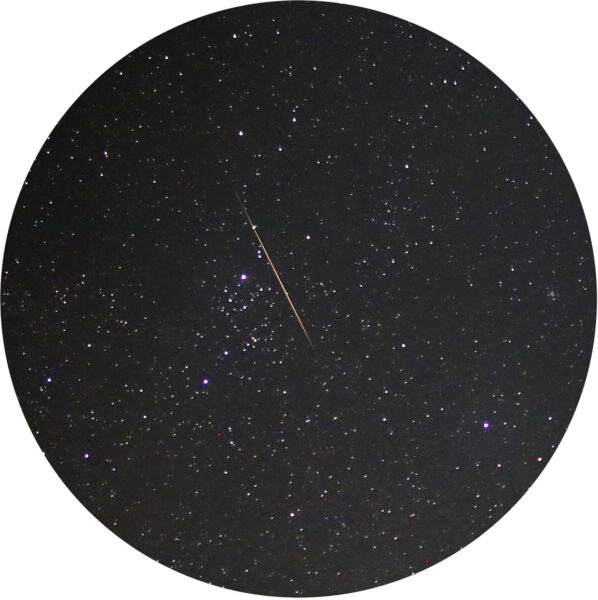










Comments
Robert Lunsford
August 5, 2022 at 8:37 pm
Nice article Bob! Let's hope that it inspires some more people to actually collect some data on these meteors instead of just watching. I realize that it is a lot like asking someone to categorize fireworks. Who wants to do that? Well, if you want to contribute to some real science this is the easiest way to do it. There are less than 100 serious meteor observers worldwide who consistently observe. Each additional observer helps us pin down the exact time of maximum activity, which in turn makes future predictions more precise. There are even unexpected surprises that occur even with the most popular showers. Don't forget that those who chose to watch after the predicted Perseid maximum last year were treated to an outburst on the morning of August 14th. We are not expecting a repeat of this activity, but you never know!
Clear Skies,
Robert Lunsford
American Meteor Society
International Meteor Organization
Association of Lunar & Planetary Observers
You must be logged in to post a comment.
Bob KingPost Author
August 6, 2022 at 10:47 am
Hi Robert,
Thank you! I appreciate you amplifying the scientific aspect and contribution anyone can make by simply recording and sharing what they see. It's so true that surprises DO happen, another reason to keep an eye on the shower. I'll never forget my surprise on August 14 last year during that unexpected outburst.
You must be logged in to post a comment.
Chris-Schur
August 8, 2022 at 12:16 pm
Informative article Bob! One aspect that most imagers may ignore is when the moon is out, we can get spectacular wide field shots of celestial events with a foreground lit by the moon. This brings up the possibilities of a stunning landscape at night lit by the moon with a bright perseid fireball.
You must be logged in to post a comment.
Bob KingPost Author
August 8, 2022 at 4:46 pm
Hi Chris,
So true! Thanks, Chris, for yet ANOTHER reason to watch the Perseids this year. Good luck in capturing that very image yourself.
You must be logged in to post a comment.
Anthony Barreiro
August 11, 2022 at 4:56 pm
Could we take a break from describing astronomical phenomena and images as "stunning"? If you start looking, you will notice that everything from earthshine on the Moon to a galaxy with a redshift of 17 is stunning us. Merriam-Webster defines the verb "stun":
1: to make senseless, groggy, or dizzy by or as if by a blow : DAZE
2: to shock with noise
3: to overcome especially with paralyzing astonishment or disbelief
It's a wonder any of us can even get out of bed anymore.
Some synonyms to consider:
alluring, amazing, astonishing, astounding, attractive, beguiling, bewitching, captivating, charming, conspicuous, enchanting, enlightening, enlivening, entertaining, enthralling, exciting, extraordinary, fascinating, galvanizing, impressive, incredible, interesting, invigorating, jaw-dropping, mind-bending, mind-blowing, mind-boggling, notable, noticeable, outstanding, phenomenal, rare, remarkable, sensational, singular, smashing, spectacular, stimulating, striking, surprising, unbelievable, uncommon, unimaginable, unique, unusual.
You must be logged in to post a comment.
Bob KingPost Author
August 15, 2022 at 12:27 pm
Good point, Anthony! And thanks for a captivating and smashing list of alternatives.
You must be logged in to post a comment.
Rod
August 13, 2022 at 1:23 am
I posted my Perseid observations here along with viewing Saturn and Jupiter using my telescope. Last night and early this morning views. https://skyandtelescope.org/astronomy-news/observing-news/this-weeks-sky-at-a-glance-august-12-20/#comment-385182
You must be logged in to post a comment.
Bob KingPost Author
August 15, 2022 at 12:27 pm
Excellent. Thanks, Rod!
You must be logged in to post a comment.
theicee
August 15, 2022 at 12:19 pm
When will the next meteor storm be? Any chance of it happening in the next 20 years?
Every meteor shower I have ever observed has been underwhelming to say the least. Especially in the last few years.
You must be logged in to post a comment.
Bob KingPost Author
August 15, 2022 at 12:35 pm
Dear thicee,
I'm glad you asked. The answer is "Yes!" Meteor expert Esko Lyytinen predicts a potential Perseid meteor storm on August 12, 2028 due to an extremely close encounter with a dust filament from Comet 109P/Swift-Tuttle.
You must be logged in to post a comment.
You must be logged in to post a comment.